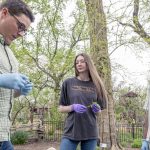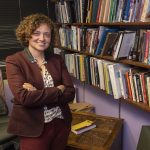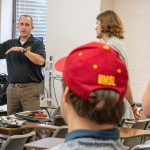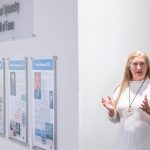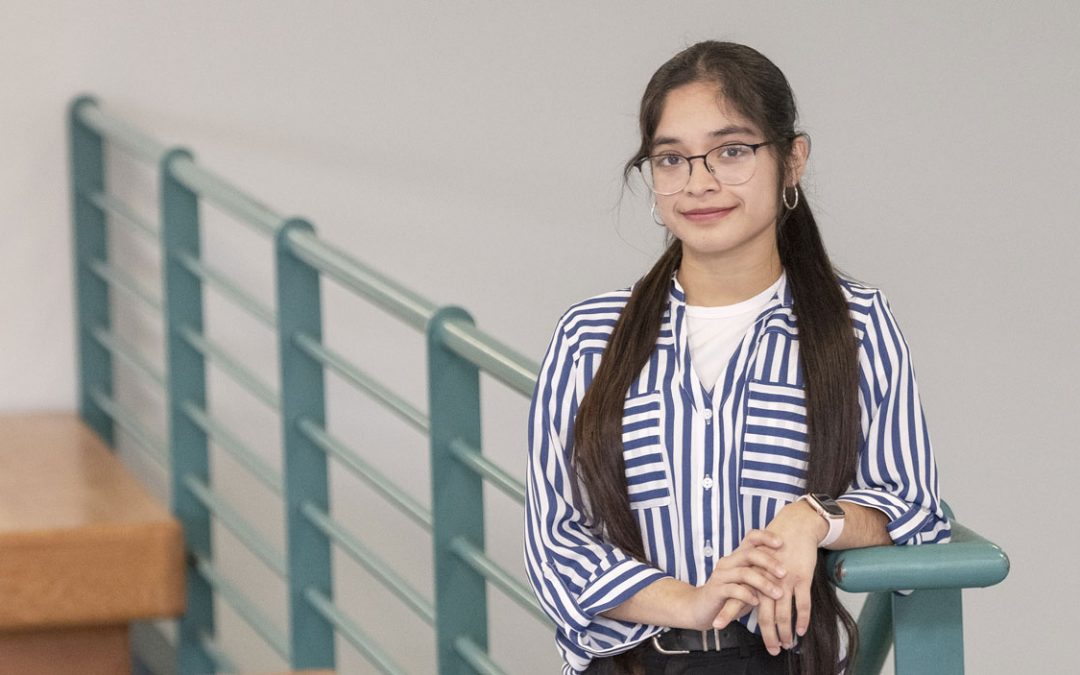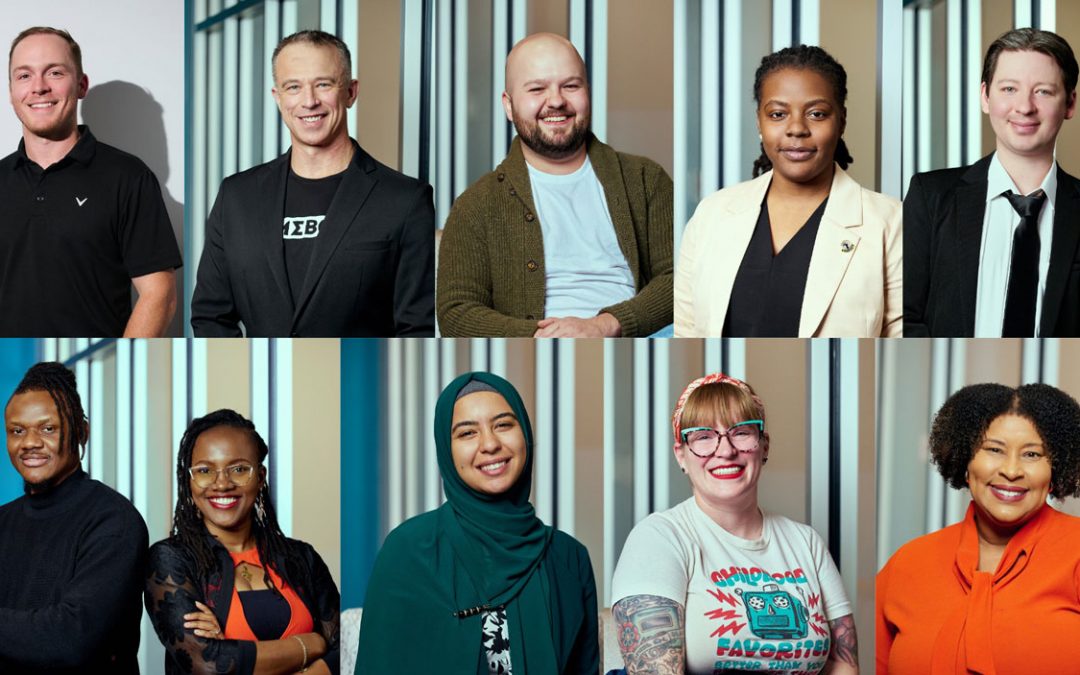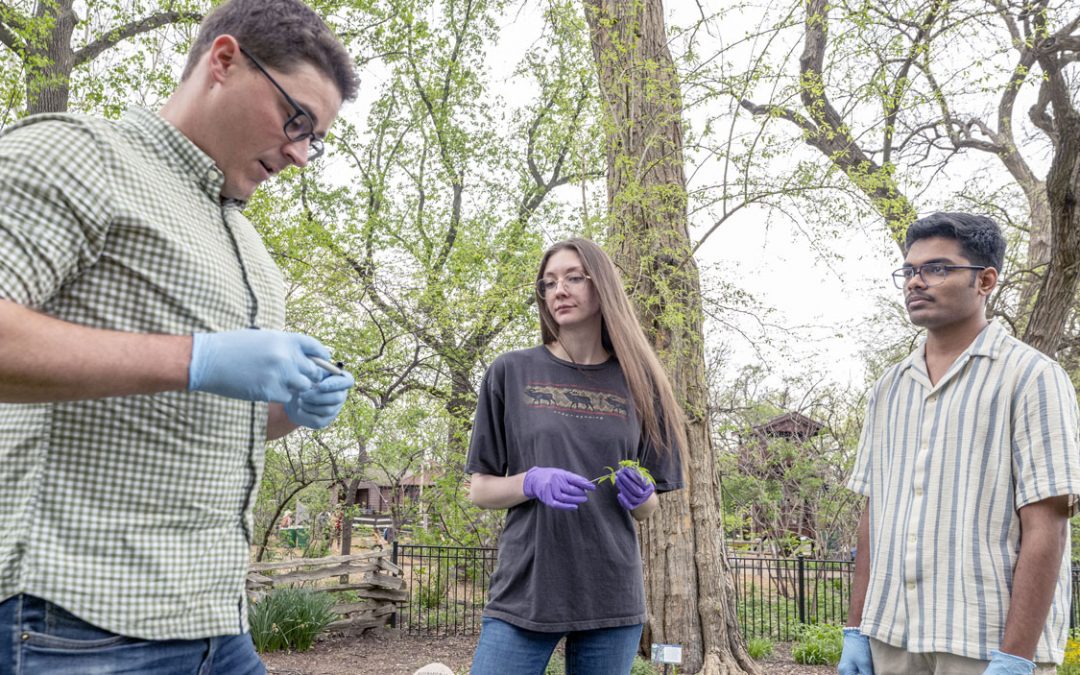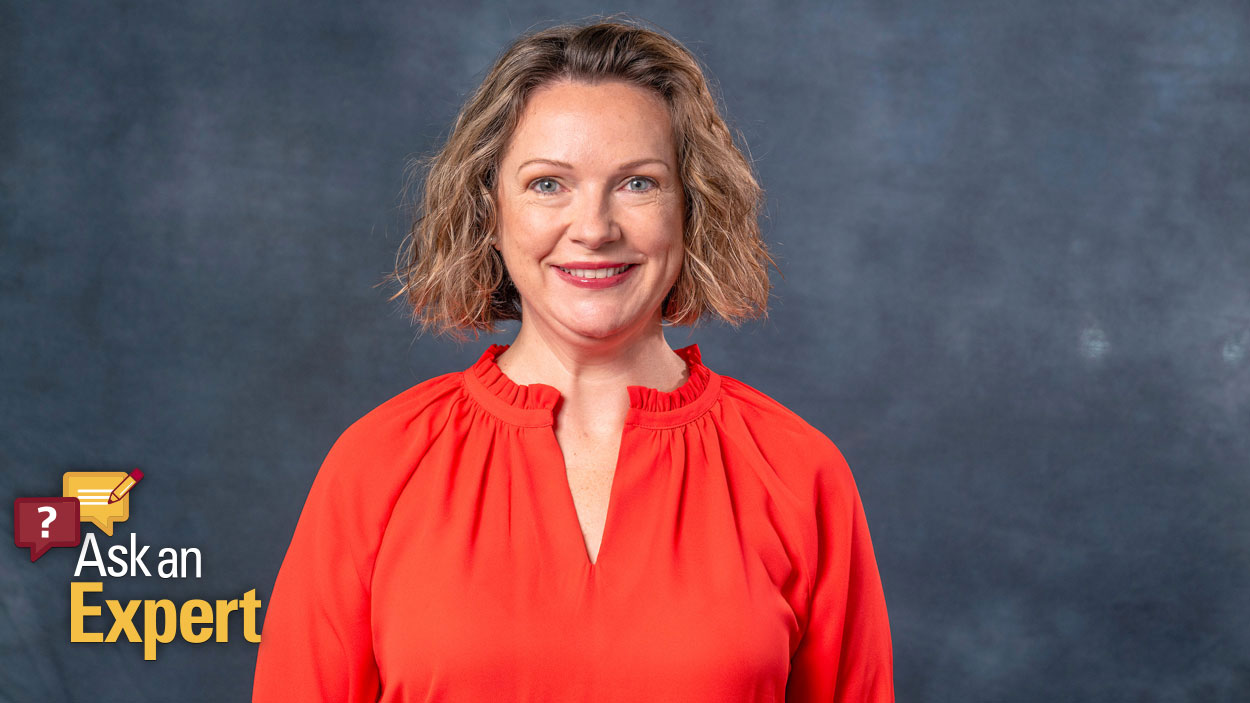
Shea Kerkhoff is an associate professor of literacy at the University of Missouri–St. Louis. Kerkhoff’s research has been featured in esteemed academic journals such as Reading and Writing: An Interdisciplinary Journal and Reading Research Quarterly. (Photo by Derik Holtmann)
For roughly a generation, the three-cueing method to teach reading held sway in many classrooms across the country. However, in recent years, there has been growing opposition to the approach.
American Public Media reporter Emily Hanford’s investigation into reading instruction and her subsequent podcast series, “Sold a Story,” helped catalyze the turning tide. Now, state houses across the nation are passing legislation to outright ban three-cueing or restrict its use in literacy education.
In July, Missouri legislators passed Senate Bill (SB) 68, which restricts the use of the three-cueing method when teaching students to read. The policy change is part of a broader education omnibus bill, and at one point, the bill banned the practice. But the final draft merely bars three-cueing as the “primary instructional method.”
Over the past decade, the College of Education at the University of Missouri–St. Louis has built a team of preeminent literacy educators and researchers, including Associate Professor Shea Kerkhoff.
Kerkhoff earned a PhD in curriculum and instruction with a focus in literacy and language education, and her research has been featured in esteemed academic journals such as Reading and Writing: An Interdisciplinary Journal and Reading Research Quarterly. She is also a primary investigator on Missouri Comprehensive Literacy State Development grants that have brought millions of dollars’ worth of literacy education resources to Missouri schools.
Kerkhoff joined UMSL Daily to discuss the three-cueing method, Missouri’s recent legislation and the current state of literacy education in the latest installment of the Ask an Expert series.
Last month, Missouri legislators passed a bill restricting the use of the three-cueing method in reading instruction. First, can you explain the three-cueing method?
The three-cueing method is based on observational research of readers and teaches readers three cues, or three ways to read a word. The first cue is to think about the meaning and what word would make sense. A student might look at the picture and guess. The second cue is the syntax or sentence structure. So, a teacher might ask, does that sound right? And the third is the graphophonic cue, which is the letter sound correspondence. In practice, that sometimes sounds like, “Look at the first letter and guess.” In those three cues, the part that is problematic is the “and guess.” It unintentionally encourages guessing rather than reading through phonics.
In your view, why has there been growing opposition to this approach?
The most effective way to learn how to read is to sound out words by matching graphemes – the letters – to the phonemes – the sounds. So, that should be the first thing that students look to do, and that’s what we should be teaching – that letter sound correspondence. There is opposition to three-cueing because it unintentionally has left too many readers as guessers. What we want is for students to be able to come to words and tackle them with their phonics skills. That is what is the most effective, based on the evidence we have now, way to teach word-level reading.
How do you think this legislation will impact Missouri educators and literacy education in the state?
I think there’s a good intention behind the law of wanting to support evidence-based reading instruction. As a professor of literacy, a proponent, an advocate for evidence-based literacy instruction, we want to make sure that schools are looking at the spirit of the law. So, the spirit of the law is that we don’t encourage kids to guess the words.
I can still remember this first-grader. It still makes me smile when I think of him. Every time he would see a word that started with the letter C and it was long, he would say, “Cinnamon!” like he was sure it was cinnamon. But it was every single time, so he was using the visual of that first letter and that it was a long word. That kind of visual cue isn’t helpful.
But, actually, using the grapheme visual to decode the phoneme is what we want them to do for each letter. Also, meaning and syntax, the first two cues, are part of the science of reading, which is what the spirit of the law is intending to advocate for. If you look at Scarborough’s Reading Rope, it also includes syntax and it includes making meaning. We do want our readers making meaning, and they have to use semantics, context and syntax to do that. It’s just that we want to flip the order. We look at the print, and we do the spelling sound correspondence. We decode words from the graphemes to the phonemes first. Then we ask ourselves, “Does that make sense in this context?” If it doesn’t, because the English language is not one-to-one grapheme to phoneme correspondence, the second step is to flex. Then students will need to change one or more of those sounds and try again until the word does make sense in context.
This legislation can be seen as part of the larger science of reading movement, not just in Missouri, but across the country. Can you explain what the science of reading is?
I consider the phrase “the science of reading” as part of a movement for more explicit and systematic phonics instruction in early reading teaching contexts. The science of reading, to me, is a way to talk about research-based reading instruction, and research-based reading instruction is about word-level reading as well as reading comprehension and building vocabulary and includes cognitive research. Teaching and learning also happens in social context, so there’s also science around the sociocultural teaching and learning aspects.
In the past five years, the College of Education has secured substantial grants to promote evidence-based literacy strategies. This funding has included some science of reading and evidence-based literacy resources for local schools, correct?
The College of Education is part of a statewide grant for literacy that includes evidence-based reading instruction and evidence-based writing instruction. The other part of literacy, in addition to reading, is writing, speaking, listening, viewing and visually representing. So, we think about cognitive science. We also think about sociocultural research when we are designing the professional development and facilitating professional learning experiences with teachers across the state.
Is there a good place for educators or parents to find evidence-based literacy resources?
I really like the website Reading Rockets. It has summaries of research written by the researchers themselves, as well as strategies, videos in classrooms, videos of one-on-one instruction like what a parent could do with the child, and lesson ideas. There’s a wealth of information on that website.
You also have a book coming out in February about the science of reading and the science of writing, “Adolescent Literacy: Integrating the sciences of reading and writing in grades 4-12.” Could you give an overview of that book?
There is research from birth to adult about reading, but the science of reading movement really seems to be focused on early grades. That’s fine, because it’s an essential, crucial time that we have to get right, because that’s the foundation of our education program – reading and writing. What I saw as a gap, though, was what does this mean in the upper grades?
My book talks about the sciences of reading and writing in grades four through 12. We talk about models of reading, including the simple view of reading, the Scarborough Reading Rope and the evolution to the active view of reading, which is the model that I take up in the book. In writing, there are parallels. There’s the simple view of writing. There’s the writing rope, and now I’m putting forth the active view of writing to parallel the active view of reading. The rest of the chapters of the book explain what that looks like in practice.
There are vignettes from teachers’ classrooms of how they put that research into action and strategies. There are over 150 strategies in the book that are tried and true, backed by the research, and actually work in real classrooms.
Overall, are you hopeful about the future of literacy education in Missouri?
I am hopeful about the future of literacy education in Missouri. It is a conversation that people are energized about. It’s a noble thing to teach someone to read, and it is empowering when you can read. So, it’s exciting that we have the Department of Elementary and Secondary Education bringing these federal resources to our state. We have the resources. We have built the capacity to continue meaningful professional learning experiences, and it’s really an exciting time.





